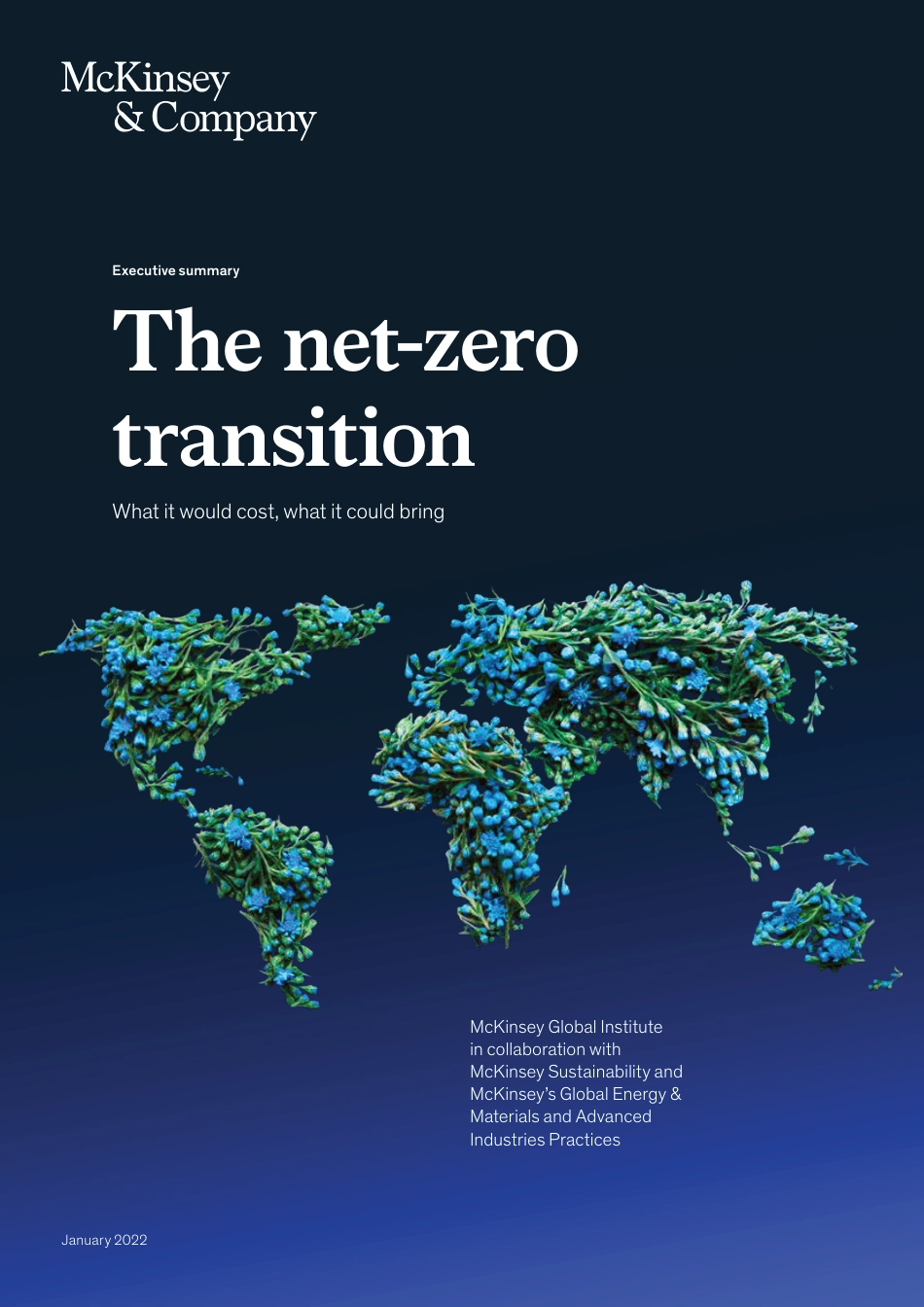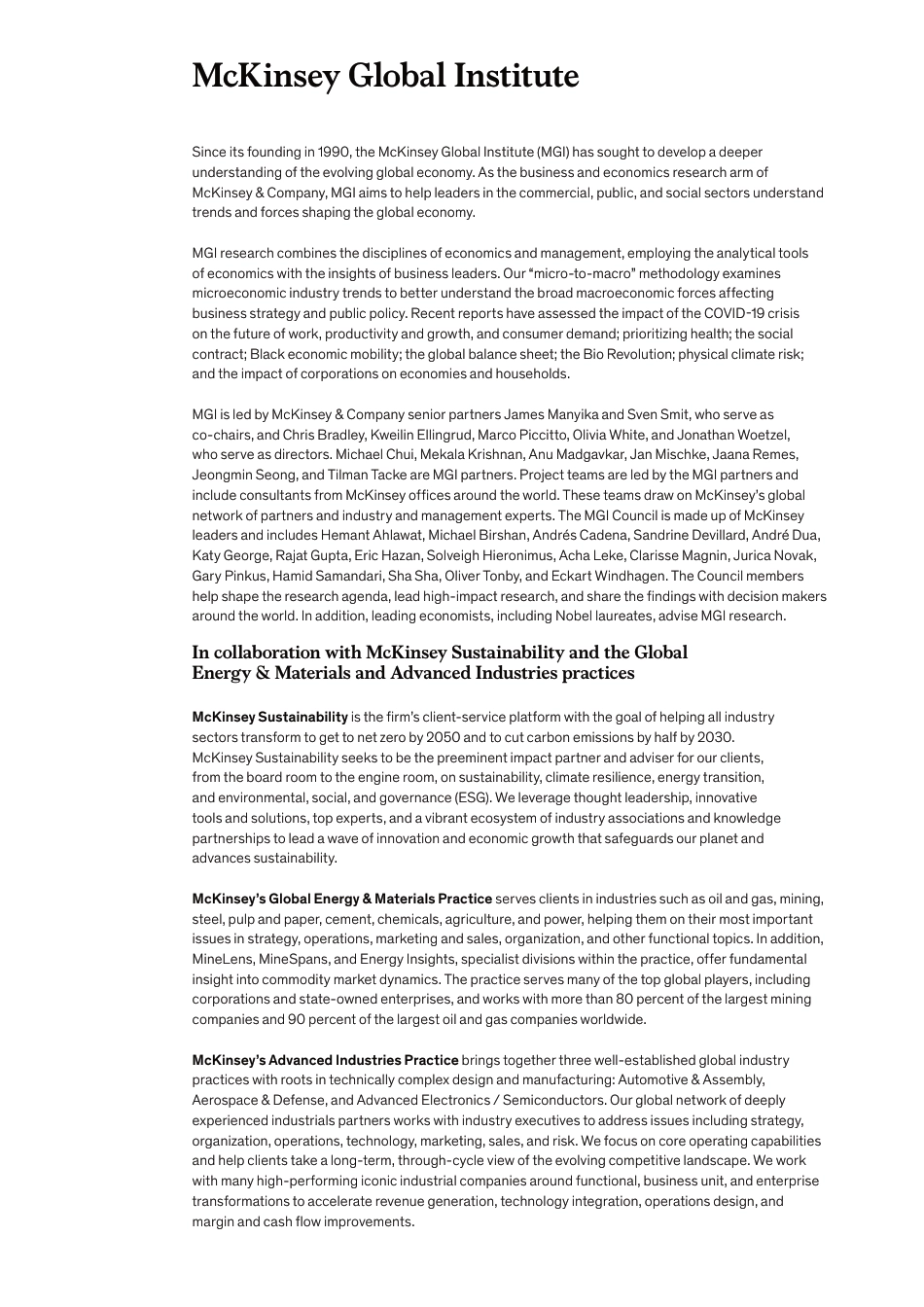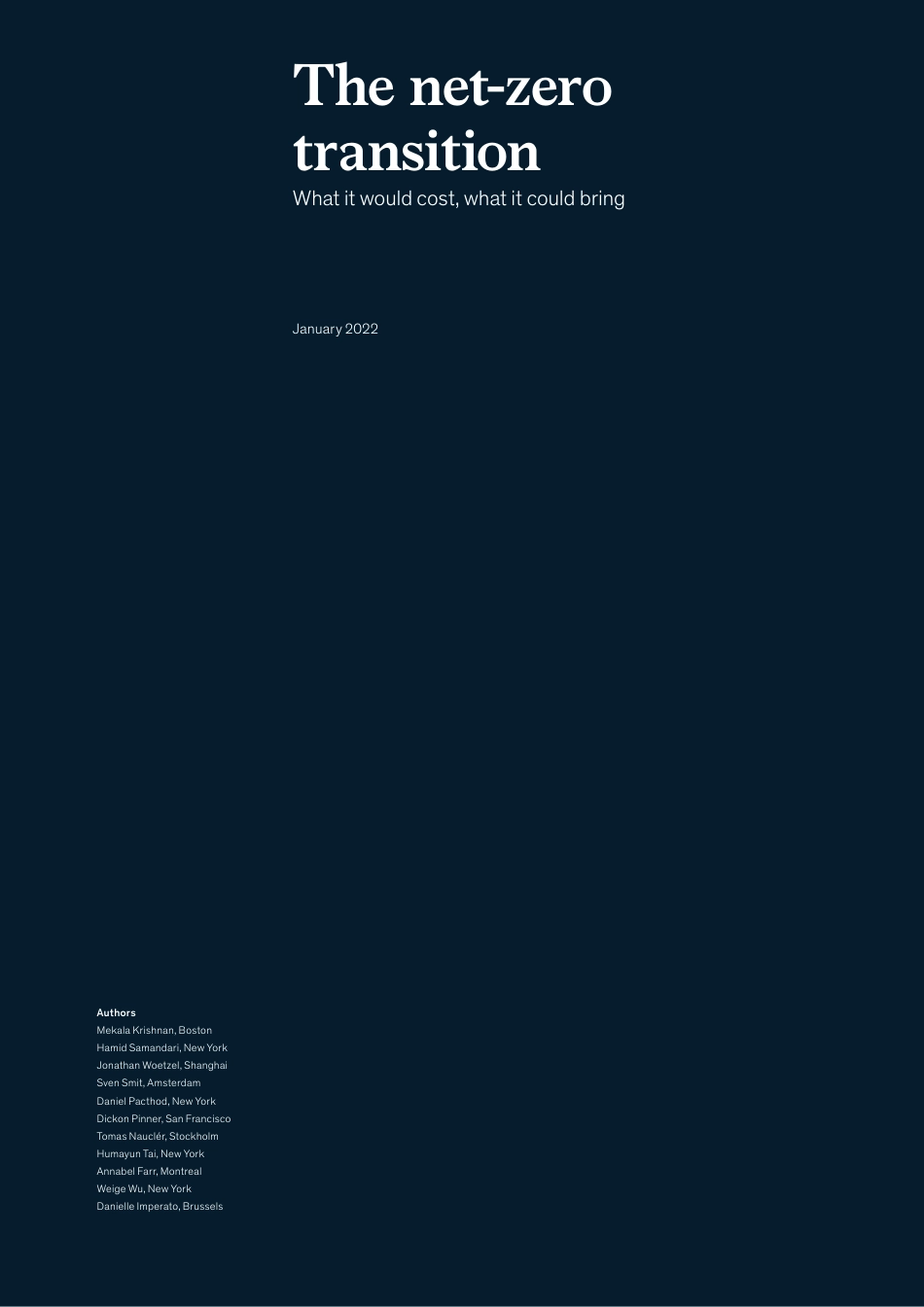January 2022Executive summaryThe net-zero transitionWhat it would cost, what it could bring McKinsey Global Institute in collaboration with McKinsey Sustainability and McKinsey’s Global Energy &Materials and Advanced Industries PracticesMcKinsey Global InstituteSince its founding in 1990, the McKinsey Global Institute (MGI) has sought to develop a deeper understanding of the evolving global economy. As the business and economics research arm of McKinsey & Company, MGI aims to help leaders in the commercial, public, and social sectors understand trends and forces shaping the global economy.MGI research combines the disciplines of economics and management, employing the analytical tools of economics with the insights of business leaders. Our “micro-to-macro” methodology examines microeconomic industry trends to better understand the broad macroeconomic forces affecting business strategy and public policy. Recent reports have assessed the impact of the COVID-19 crisis on the future of work, productivity and growth, and consumer demand; prioritizing health; the social contract; Black economic mobility; the global balance sheet; the Bio Revolution; physical climate risk; and the impact of corporations on economies and households.MGI is led by McKinsey & Company senior partners James Manyika and Sven Smit, who serve as co-chairs, and Chris Bradley, Kweilin Ellingrud, Marco Piccitto, Olivia White, and Jonathan Woetzel, who serve as directors. Michael Chui, Mekala Krishnan, Anu Madgavkar, Jan Mischke, Jaana Remes, Jeongmin Seong, and Tilman Tacke are MGI partners. Project teams are led by the MGI partners and include consultants from McKinsey offices around the world. These teams draw on McKinsey’s global network of partners...



